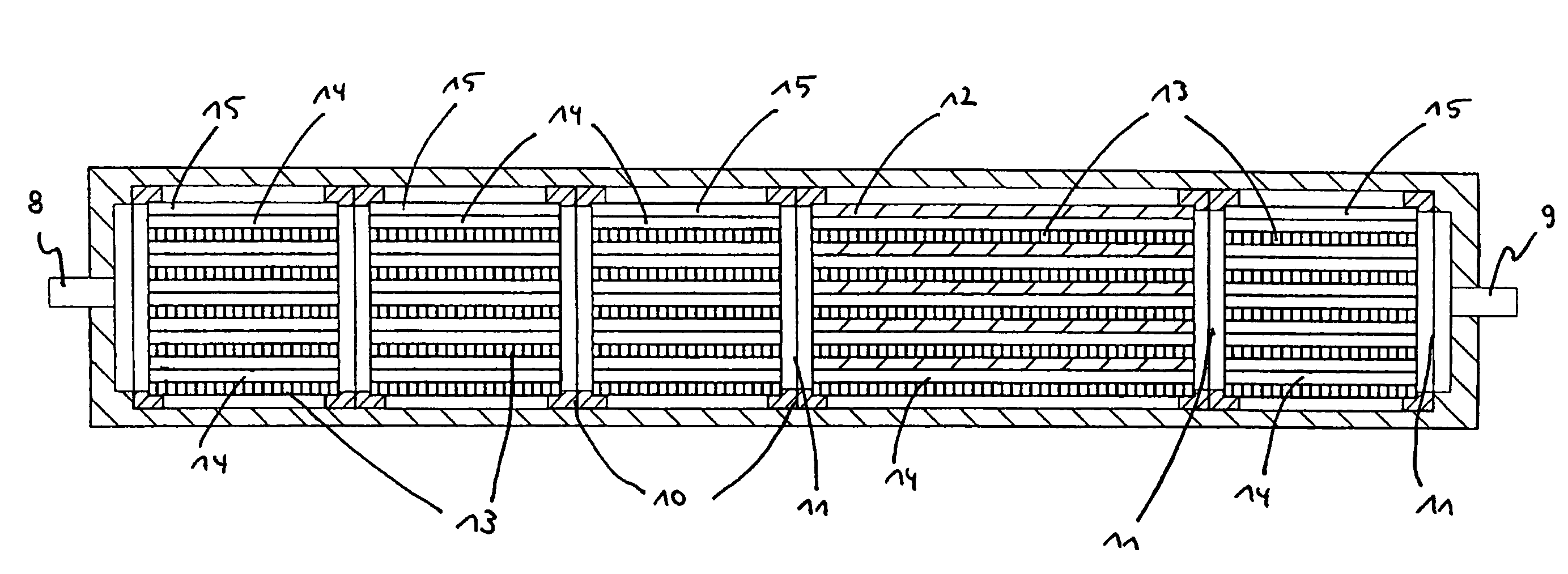Modular microreaction system
- Summary
- Abstract
- Description
- Claims
- Application Information
AI Technical Summary
Benefits of technology
Problems solved by technology
Method used
Image
Examples
Embodiment Construction
[0035]FIG. 1 reproduces the arrangement of the individual elements of a microreaction system according to the invention schematically. The housing 1, represented by a broken line, has three educt gas inlets 7, an inert gas inlet 8 and a product gas outlet 9. Arranged in the interior of the housing, one behind another, are functional base modules 2, 2′ and 2″, specifically mixer modules 2, a reaction section 2′ and a quench module (cooling or heating module) 2″. Provided at the inlets and outlets 7, 8 and 9 of the housing 1 in each case are mass flow controllers 5, which measure the gas flow and control it by driving valves. Furthermore, pressure and temperature sensors 6 are provided in front of and behind the individual base modules 2, 2′ and 2″ and are used to register and / or control these parameters. Each of the base modules 2, 2′ and 2″ illustrated is equipped with heat transfer elements, which can be supplied with cooling or heating fluid (gas or liquid) via feeds and returns 4...
PUM
 Login to View More
Login to View More Abstract
Description
Claims
Application Information
 Login to View More
Login to View More - R&D
- Intellectual Property
- Life Sciences
- Materials
- Tech Scout
- Unparalleled Data Quality
- Higher Quality Content
- 60% Fewer Hallucinations
Browse by: Latest US Patents, China's latest patents, Technical Efficacy Thesaurus, Application Domain, Technology Topic, Popular Technical Reports.
© 2025 PatSnap. All rights reserved.Legal|Privacy policy|Modern Slavery Act Transparency Statement|Sitemap|About US| Contact US: help@patsnap.com



